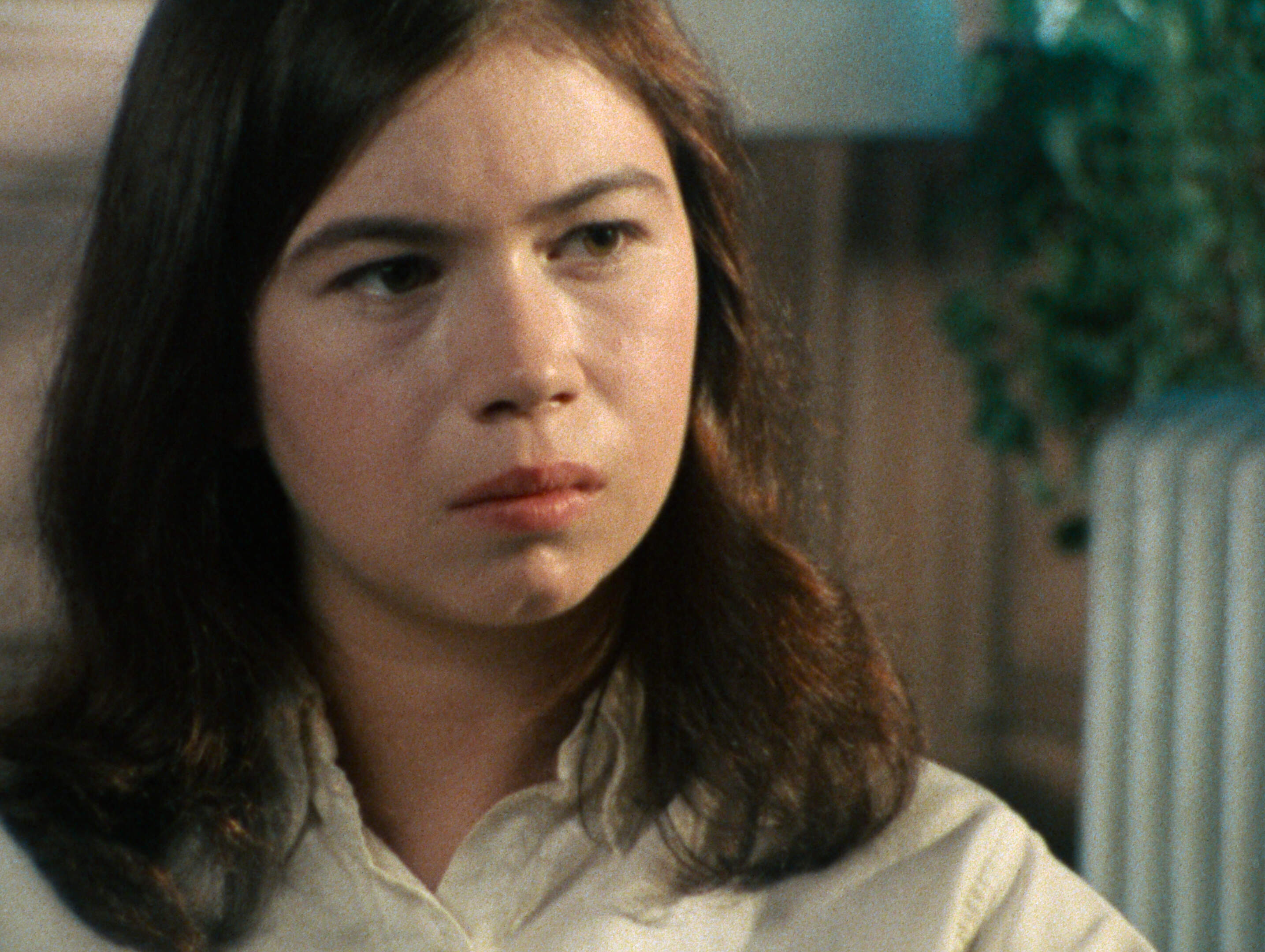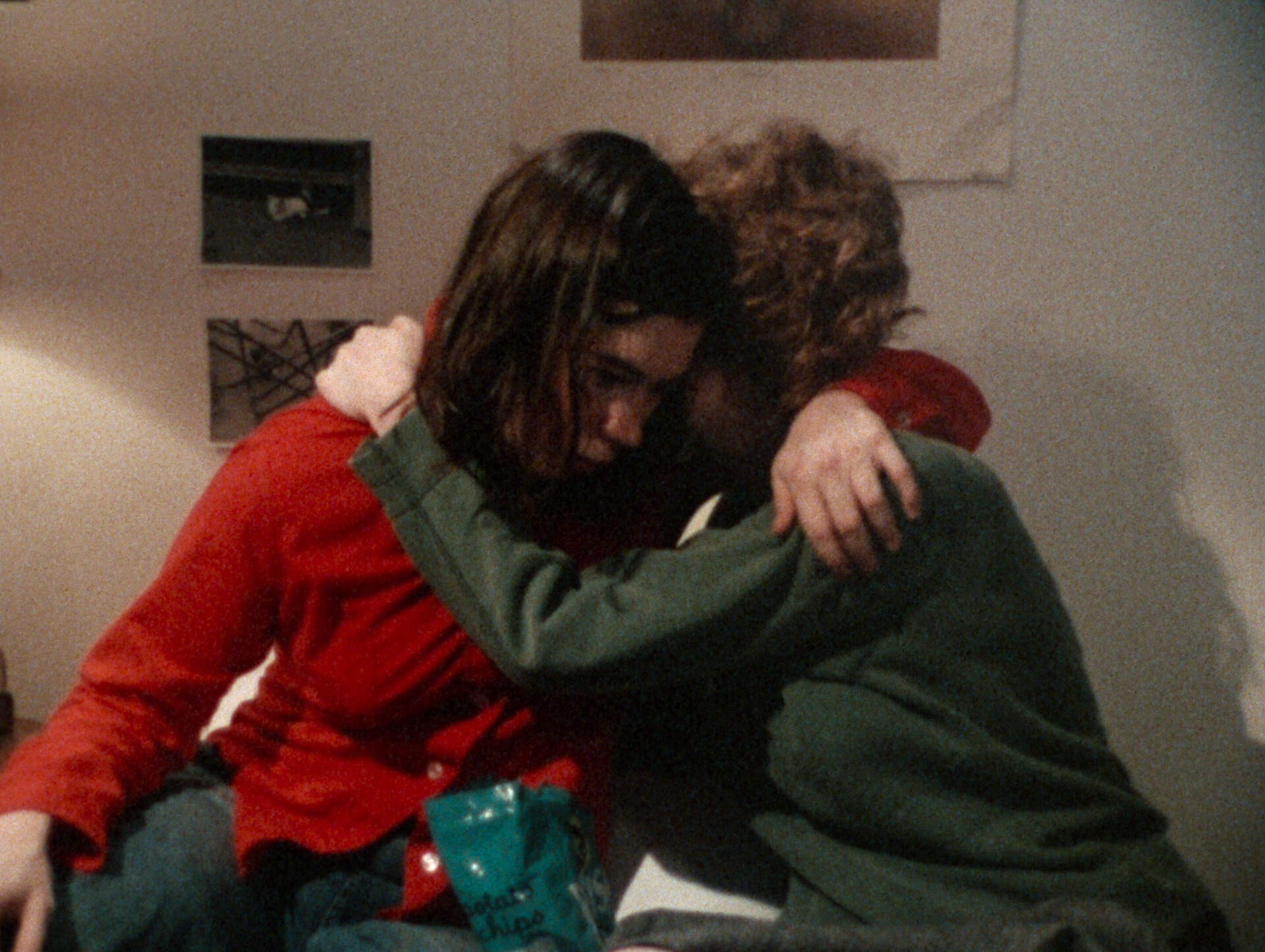Advertisement
Review
Landmark film 'Not a Pretty Picture' pulls apart a director's assault

I don’t keep journals the way I did when I was younger, but there are still times when I don’t understand how I really feel about something until I’ve written about it. This is fairly common, I’m told. Since the days of the cave paintings people have been using art to make sense of the world and better comprehend their place in it, so sometimes the healthiest way to process an experience is by taking it apart and reassembling it on your own. That’s exactly what director Martha Coolidge did with her bold 1976 feature debut, “Not a Pretty Picture,” an ahead-of-its-time documentary hybrid in which we watch the filmmaker restage and reexamine the night when, as a 16-year-old boarding school student in 1962, she was raped by an acquaintance while visiting New York.
The film doesn’t just probe Coolidge’s own recollections of the evening, it also incorporates the memories of her then-roommate, as well as the input of cast members drawing upon their own experiences with sexual assault. Dramatic reenactments are interrupted by interviews and provocative, sometimes messy on-set discussions. Coolidge appears in front of the camera often, rewriting scenes on the fly while relentlessly questioning her own interpretations and motivations. As we watch the movie being made, we’re also witnessing an artist taking back control of an evening during which it was violently wrested away from her, finding catharsis in the act of creation.
Out of circulation for ages, “Not a Pretty Picture” has recently been reissued in a new 4K restoration running at the Brattle Theatre alongside a mini-Martha Coolidge retrospective featuring 35mm prints of the director’s 1983’s “Valley Girl,” 1985’s “Real Genius” and 1991’s “Rambling Rose.” It’s a welcome tribute to a trailblazing filmmaker largely overlooked in the more dude-centric corridors of cinema studies. Coolidge was the first female president of the Director’s Guild of America, and the fact that it took until 2002 for a woman to get the gig should tell you how much female directors have had working against them. Still, one of the more heartening developments on the movie beat these past few years has been seeing filmmakers from Coolidge’s era like Joan Micklin Silver, Joyce Chopra and Nancy Savoca being discovered and embraced by a new generation of cinephiles.
Coolidge was the first female president of the Director’s Guild of America, and the fact that it took until 2002 for a woman to get the gig should tell you how much female directors have had working against them.
Coolidge’s 1974 breakthrough documentary short “Old-Fashioned Woman” (out of official distribution but available for now on the filmmaker’s Vimeo page) is exactly the kind of movie you wish somebody had made about your nana. Visiting her family home for Christmas in Norwood, the director has a cozy and sometimes disarmingly frank talk with her grandmother, Mabel Tilton, about growing up in the late 19th century and the changing roles for women in this new era of second wave feminism and Roe vs. Wade. For an old Yankee with a magnificently starchy accent who was once married to the Lieutenant Governor of Massachusetts, Mabel’s a lot hipper about certain issues than you might expect. As in her feature debut, Coolidge puts herself on screen, ready and willing to abandon her preconceived notions of what the film should be.

It’s that same spirit of exploration that makes “Not a Pretty Picture” such a valuable, if upsetting experience. Coolidge is a great listener, and she cast lead Michele Manenti after learning the actress survived a similar assault. It’s incredibly affecting to watch these two try and work through their trauma together, wondering at times what exactly they’ve gotten themselves into here, making a public exhibition out of such personal, painful memories. Co-star Jim Carrington looks uncannily like the actor James Franco – unfortunate, given the circumstances – and it can get pretty uncomfortable during his tone deaf contributions to the discourse. (Some dudes don’t realize that they don’t always have to chime in about everything.)
The element I think that works in theory better than practice is having Coolidge’s high school roommate Anne Mundstuk playing herself. It’s maybe one Brechtian device too many, seeing an obvious 28-year-old amid a cast of teenagers. (It’s also that Mundstuk just isn’t very good, clearly a stage actress who isn’t modulating her performance for the proximity of a camera.) Still, it’s welcome to hear her perspective, and how disorienting it must be to find yourself reliving your girlhood years later from an old friend’s point of view. This is a gutsy, powerful project, with ramifications that will rattle around your head for a long time after the closing credits roll.
After “Not a Pretty Picture,” Coolidge went to Hollywood, where she wound up helming two of the 1980s most fondly remembered comedies. It was a more prurient era that hasn’t aged especially well. (Indeed, a Brattle retrospective back in 2017 highlighted how female-directed farces from that decade have held up compared to their dodgier, more masculine counterparts.) Yet despite the contractually mandated topless shots, Coolidge’s “Valley Girl” is distinguished by the innocent ardor of an impossibly young Nicolas Cage wanting to stop the world and melt with Deborah Foreman. The director’s early pay-cable perennial “Real Genius” is a similarly, surprisingly tender college romp – imagine “Revenge of the Nerds” without all the sex crimes – boasting a blazingly charismatic turn from Val Kilmer as an irreverent prodigy. Picture Ferris Bueller if he hadn’t been a spoiled sociopath. The great critic Sheila O’Malley lamented in Film Comment that “you wonder how the landscape might have been different had Martha Coolidge and not John Hughes been the Narrator of Teen Experience in the 1980s.”
My favorite of her movies is 1991’s “Rambling Rose,” an adaptation of Calder Willingham’s 1972 novel starring Laura Dern as a clumsy, promiscuous housekeeper in the Depression-era South. The film plays out as the honeysuckle-sweetened memories of a 13-year-old boy (Lukas Haas) whose first love was this lanky, free-spirited lady who seems to break more dishes than she’s able to wash. Dern’s unrefined, erotic energy turns the house (and most of the town, for that matter) upside down, much to the consternation of Robert Duvall’s slightly daffy daddy and the rest of the menfolk. But Dern’s real-life mom Diane Ladd provides the movie’s moral backbone as the lady of the house, bearing a distinct resemblance to the matriarch we met in Coolidge’s “Old-Fashioned Woman.”
“Rambling Rose” is a much tougher movie than it might first appear from the gauzy, nostalgic trappings, dealing frankly with matters of sexual abuse and the means by which society empowers frightened men to inflict their wills upon women they find intimidating. Saturday’s “Rambling Rose” screening is being presented by Strictly Brohibited, a film discussion group co-founded by local artist and Brattle projectionist Alex Kittle to highlight the work of women and gender-expansive filmmakers in an environment prioritizing the contributions of non cis-male participants. It can get pretty testosterone-heavy at area screenings, and having had the pleasure of attending a virtual Strictly Brohibited event for Joyce Chopra’s “Smooth Talk” a couple of years ago, I can vouch for the fact that sometimes it’s more valuable for us guys to sit back and listen. Especially when it comes to subject matter like this.
“Not a Pretty Picture” screens at the Brattle Theatre from Friday, Mar. 8 through Sunday, Mar. 10. “Valley Girl” screens on 35mm Friday, Mar. 8. “Real Genius” and “Rambling Rose” screen on 35mm Saturday, Mar 9.
